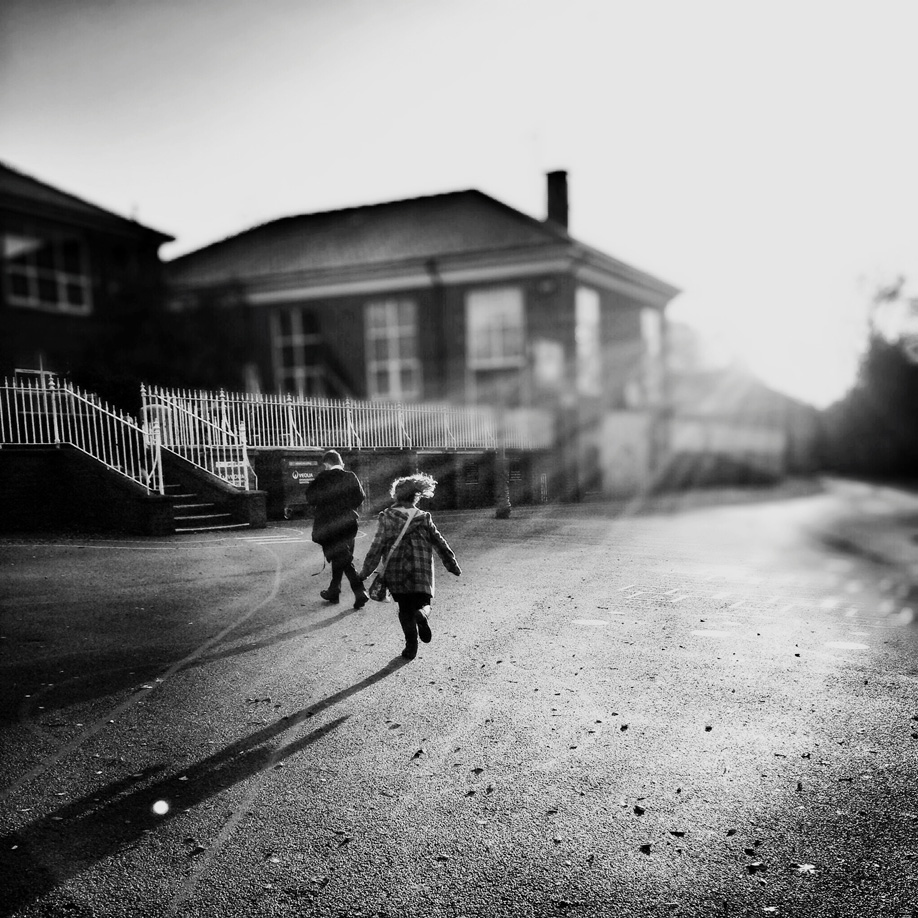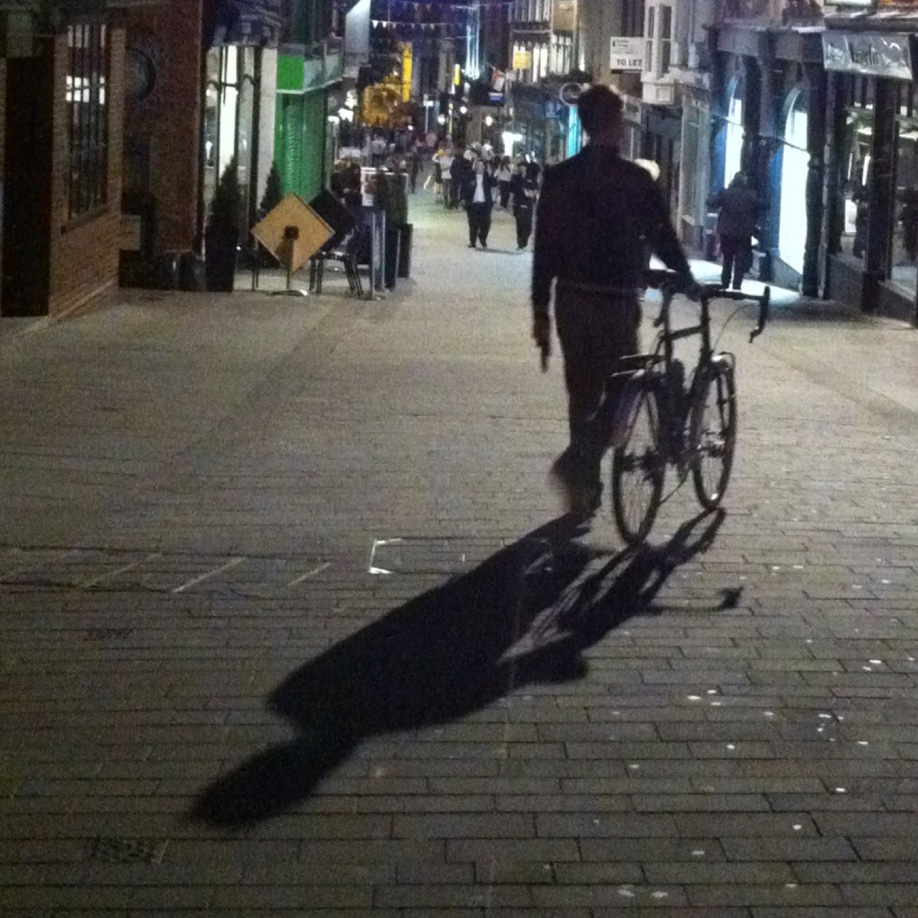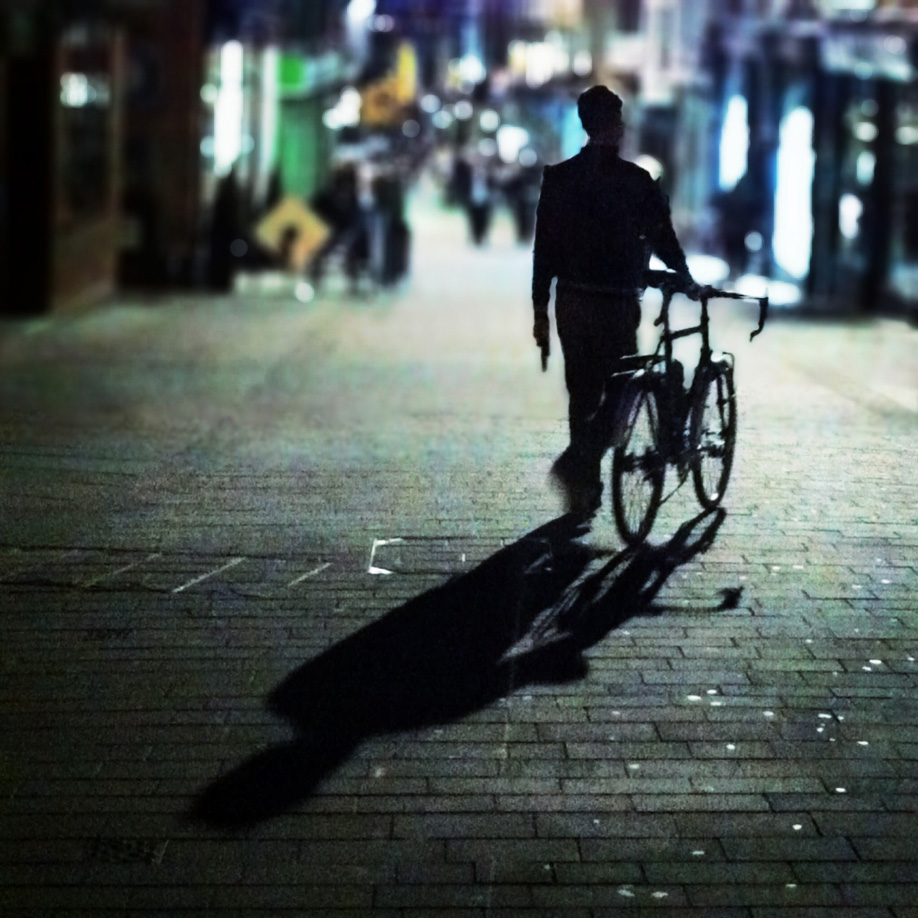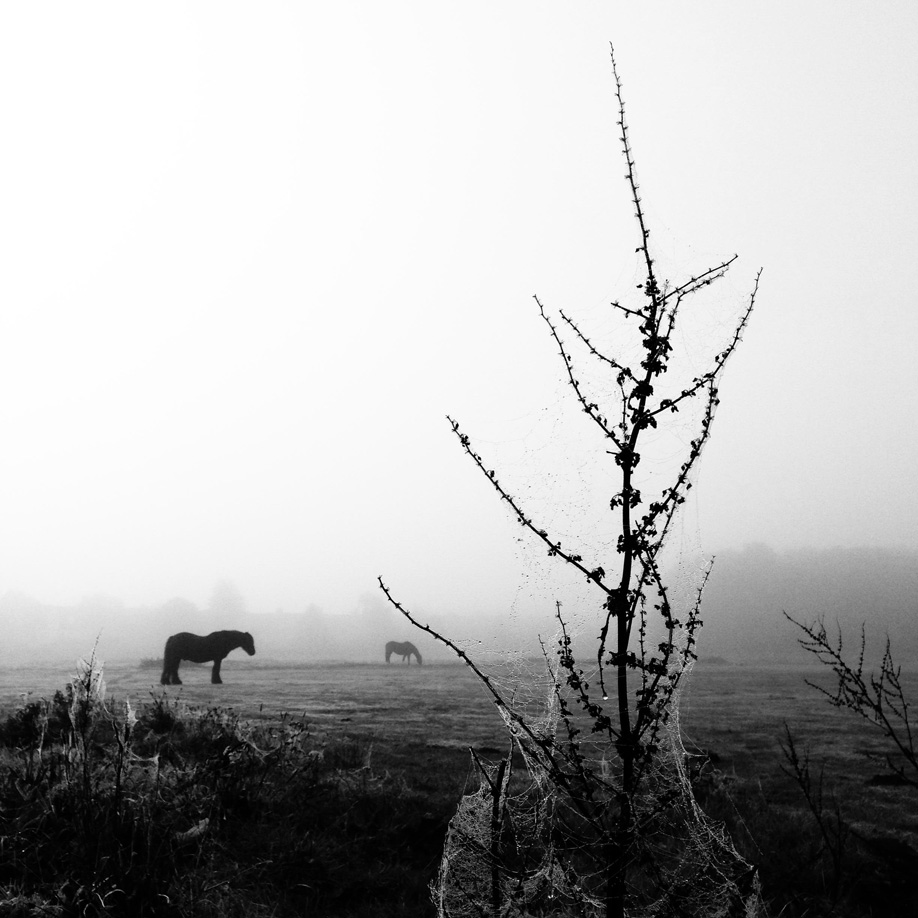Making use of depth of field or depth of focus is one of the great challenges when using a mobile phone for photography. Traditional (D)SLR cameras provide the ability to influence all three elements of the exposure triangle (ISO, aperture and shutter speed). By adopting an aperture priority or fully manual approach it is possible to give a greater weighting to aperture and as a result influence depth of field.
What we want to achieve:
The relationship between depth of field and aperture is a little out of scope for this article but in simple terms a ‘wide open’ aperture is one of the elements that can result in a shallow depth of field. A shallow depth of field allows the subject to stand out from an intentionally out of focus foreground / background (known as bokeh).
This image was captured using a traditional camera with a wide open aperture at F1.4. The key point to note is that notwithstanding the monochrome nature of the image the subject is highlighted because it is sharp compared to the rest of the canvas. Items like the horse’s mane standout. If the whole image was in focus the mane would be less obvious due to the grass which would have quite a similar texture.
The issues:
Modern mobile phone cameras provide the ability to take control or give priority to either ISO or shutter speed. However, the aperture is fixed. The good news for the quick point and tap opportunity is that combined with the fixed focal length of mobile phone camera lenses, the fixed aperture gives a very wide depth of field in normal circumstances. In all likelihood therefore much of the scene captured will be satisfactorily focused.
Best practice is to focus manually to ensure the best quality image. Even so, many street photographers will set up with a mid-range aperture to provide some safety in what is a dynamic environment where the shot can be gone in the blink of an eye. This initial set up decision is not available in mobile photography but in well lit situations I believe the standard mobile phone camera is well suited to the street environment. In fact it is the ultimate urban camouflage for a street photographer.
There is a pay off though. By fixing the aperture there is no opportunity to control depth of field at capture. It also restricts our exposure options in poorly lit situations, risking motion blur and/or under-exposure.
This image was captured with an iPhone4 whilst I was staring out of a bar window people watching. Whilst the distance is a little blurred it is not a particularly pleasing effect. It feels neither in nor out of focus.
After a play with a few apps it feels much more pleasing. Out of focus sparkling distant lights have been transformed into the traditional circular bokeh effect that photographers using traditional equipment know and love. This article discusses various methods to achieve this look with your mobile phone.
Achieving depth of field – three solutions:
1. Focus on close subjects.
Mobile phone cameras can generate a shallow depth of field straight out of camera if the image being captured is extremely close to the lens. In the following image I focused on a wet cobweb and you can see that the scene in the background is out of focus.
The ability to achieve this effect falls away rapidly as the distance from the subject increases. With increased distance, the depth of field effect will be significantly less marked, possibly non-existent. In the following straight out of camera image I wanted to find the balance between foreground focus and background blur.
Along with aperture and lens focal length, focal distance defines depth of field. It is the only element a mobile photographer has control over at the point of capture. Varying the distance between you, your subject and appreciating how that impacts the blur in the rest of the scene is a worthwhile exercise.
2. Lens attachments.
It is possible to purchase any number of lenses to attach to your mobile phone. I have a Macro lens which enables me to focus really closely and generate amazing bokeh. I also have a Lensbaby Sweet Spot lens which enables me to focus on a small section of the scene rendering the rest out of focus (this isn’t really depth of field but it generates a beautiful bokeh effect via optics rather than processing). Both of these attachments are little more than an inch or two in size and so totally portable.
This image was captured with a Macro lens attached generating a depth of field measured in millimetres.
3. Apps.
There are a selection of apps that allow the depth of field effect to be simulated in post processing. My Midnight on Lincoln High Street image earlier is one example – the full edit for this image can be viewed here. My own favourite is AfterFocus. Other apps include Tadaa SLR and Big Lens. These apps are capable of generating beautiful really quite authentic results. Unfortunately they take much more time than the simple push of a button with a wide open (D)SLR but I encourage you to pick one, have a play and practice generating the effect on one of your own images.
For me, ‘apping’ is very much part of the mobile photography image creation process. For the right image, this is the method I employ the most to achieve depth of field.
Other examples:
Before:
After:
Full edit can be viewed here
Before:
After:
Full edit can be viewed here
Skip
Known as Skip to friends, Paul is an exhibited, commissioned and prize winning iPhone photographer from Lincoln, England. He runs his own successful blog at skipology.com outlining the apps and processes involved in creating his images. His style ranges from low edit street shots to highly textured / painterly composites all created using only the iPhone and iPad. Socially, connect with Skip on Facebook at www.facebook.com/skipology Instagram at instagram.com/skipology or Twitter at twitter.com/skipology










